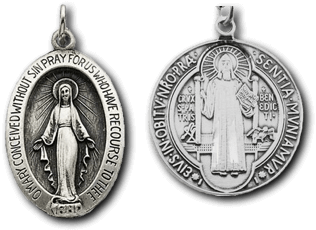Who is Beelzebul then?

The name "Beelzebul" (in some ancient biblical texts he is called Beelzebub") does not appear in the text of the exorcism ritual except in one of the optional reaadings from the Gospels. This name is a Hebrew term meaning "the lord (or god) of the flies." Jesus speaks of the demon Beelzebul in repsonding to the frightening pharisaical blasphemy against the Holy Spirit in which they attributed Jesus' exorcist powers to the prince of demons. As Hebrew or Aramaic name, the Pharisees were more likely to use it than the Latin or Greek names for the devil, but it is interesting that they did not use the more common Hebrew name of Satan, which appears many times in the Hebrew Bible.
While it is not entirely clear from Scripture whether Beelsebul is actually the same as Satan, it is possible that Beelzebul is another distinct and powerful demon in league with Satan. Beelzebul is called, "the prince of demons," but Jesus refers to Satan as "the prince of this world." The distinction in terminology notes a possible distinction in demonic functions: Satan could be the overlord of the human demonic world, while Beelzebul couldbe his commanding general of the army of demons. Just as there are many holy angels with distinct personalities and functions, so also the demonic world reflects certain distinctions of personality and function.
Common usage, however, identifies the two names as one entity. Popular literature usually identifies Beelzebul with Satan. Nobel prize-winning author William Golding's fascinating novel, Lord of the Flies, relates a fictional story of a group of children who are stranded alone on a deserted island where they are forced to survive and form their own make-shift community without any adult influence. One group of children begins to worship a rotted-out carcass of an animal that is covered with flies (shown so effectively in the Judas suicide scene of Mel Gibson's film, The Passion of the Christ). Over time they begin to follow the murderous dictates of the demon operating through the carcass. This novel shows both the disgusting nature of evil and the innate human tendency toward evil when deprived of human culture, God and religion. Beelzebul, the "Lord of the Flies," is, in this account, simply an image of Satan.
Fr. Gabriele Amorth, the former chief exorcist of the Diocese of Rome, mentions in his book, An Exorcist Tells His Story, that in the course of exorcisms, when a demon identifies himself with a biblical name, these are usually the most important demons and therefore the most difficult to expel. It stands to reason that Holy Scripture would point out to us, or "expose" to the light of faith, the worst enemies of our souls even if it is difficult to know everything about them.
By Fr. Thomas J. Euteneuer "Exorcism and the Church Militant" page 22.




